
Posts Tagged: Predators
Do You Have 'Cats?
If you have a passionflower vine (Passiflora), you probably have cats. No, not the four-legged ones that meow, chase mice or cavort with catnip. These 'cats or caterpillars are part of the life cycle of the Gulf Fritillary butterflies (Agraulis vanillae) and Passiflora is their host...
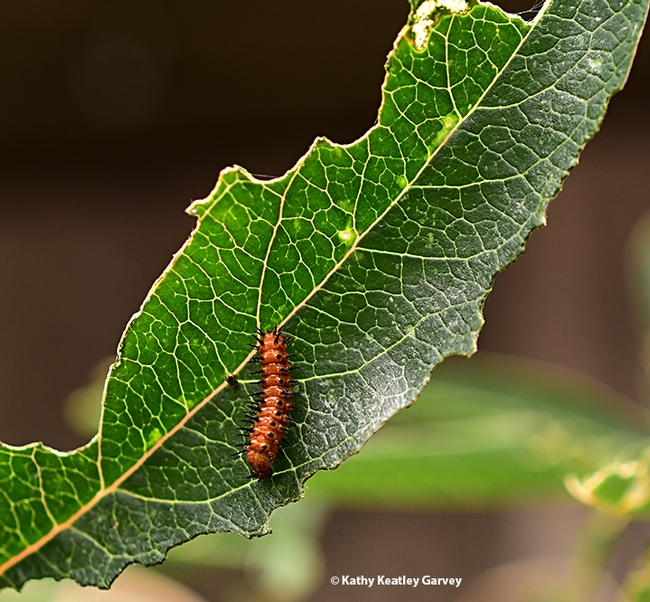
A Gulf Fritillary caterpillar on a passionflower (Passiflora) leaf. (Photo by Kathy Keatley Garvey)
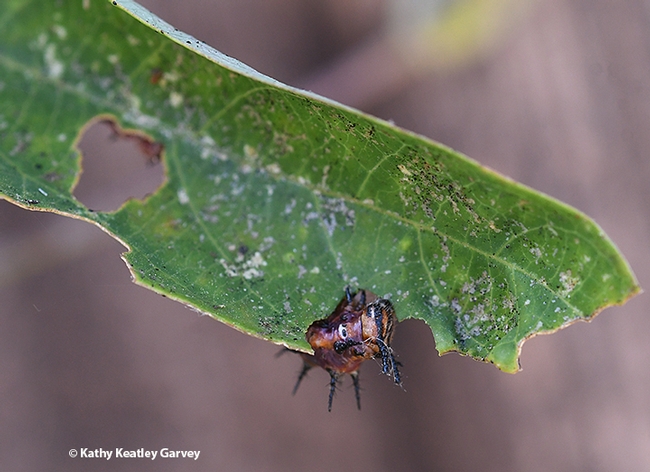
Munch, munch, munch! A Gulf Fritillary caterpillar is chomping away. (Photo by Kathy Keatley Garvey)
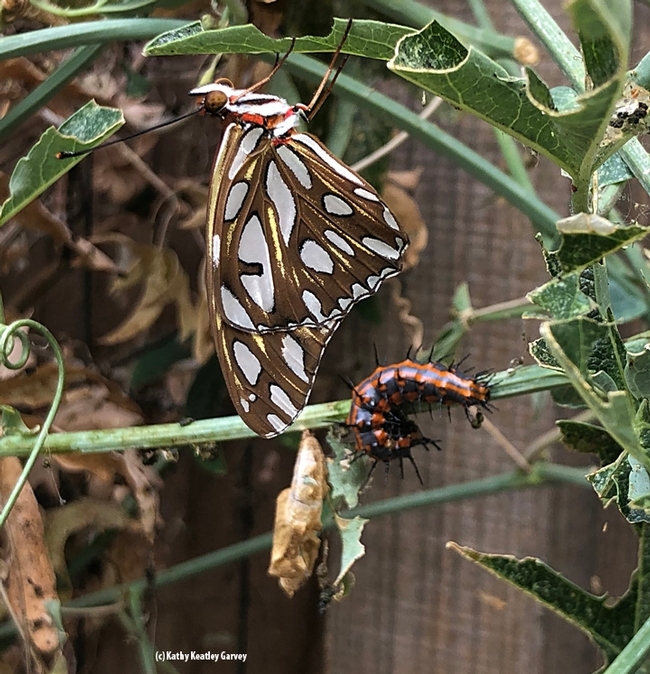
This image shows a Gulf Fritillary caterpillar, a chrysalis and an adult. (Photo by Kathy Keatley Garvey)
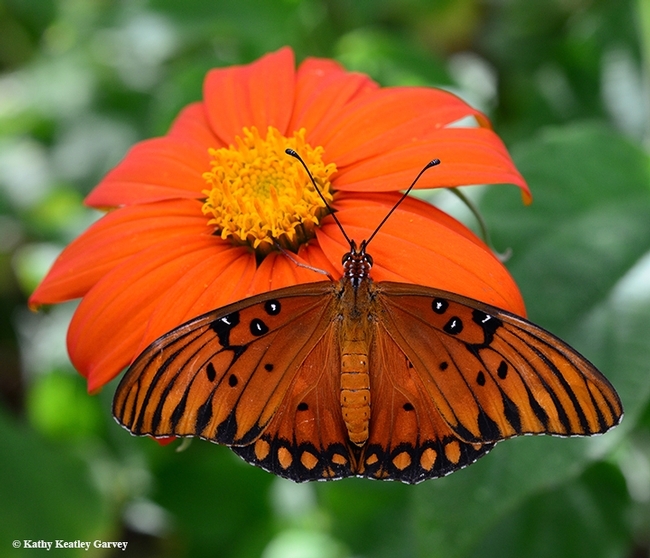
Dorsal view of a newly eclosed Gulf Fritillary nectaring on a Mexican sunflower, Tithonia rotundifola. (Photo by Kathy Keatley Garvey)
Catch of the Day
It's early morning and the spider is hungry. It snares a honey bee foraging for pollen and nectar in a patch of Mexican sunflowers (Tithonia rotundifola) in a Vacaville pollinator garden. The spider slides down the sticky web, kills its prey with a venomous bite, and begins to...
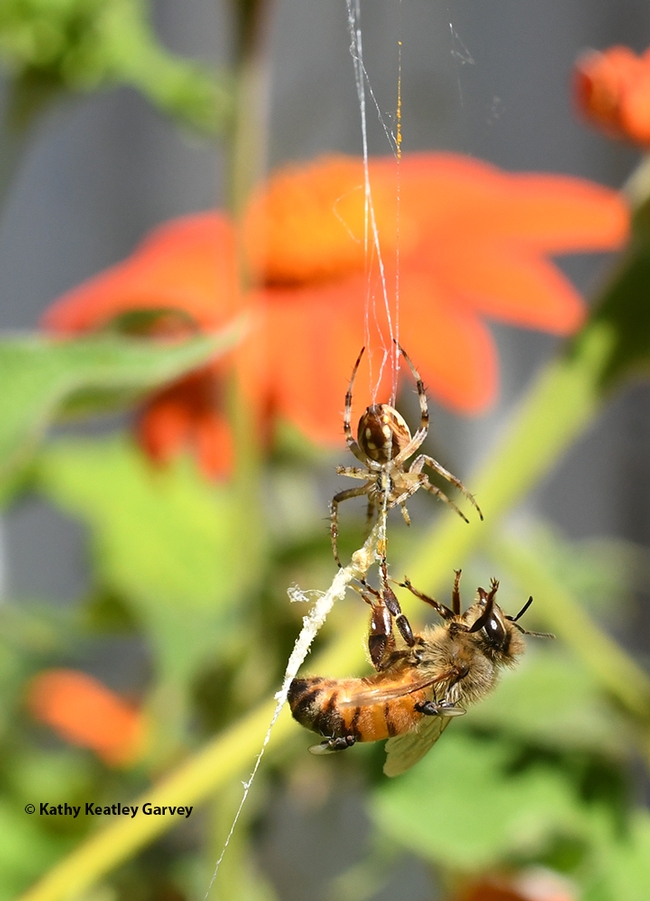
An orbweaver snares a honey bee in its sticky web in a patch of Mexican sunflowers, Tithonia rotundifola, in Vacaville, Calif. (Photo by Kathy Keatley Garvey)
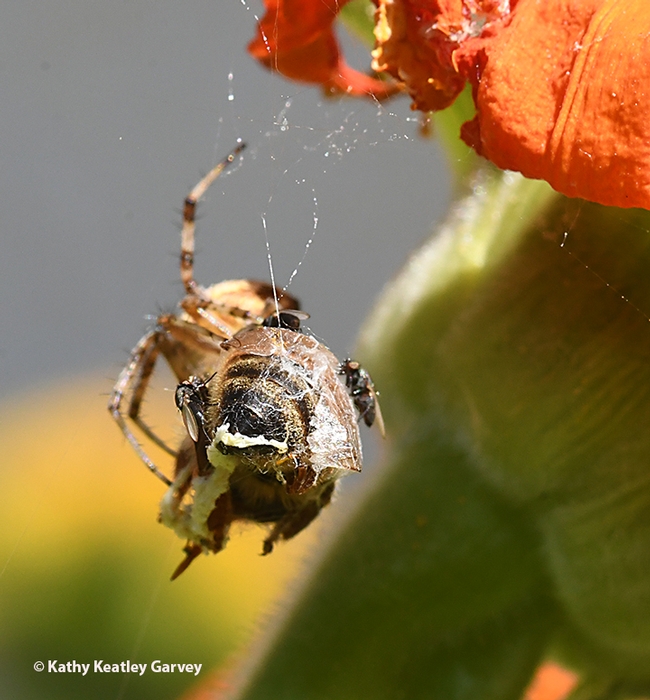
Tiny freeloader flies (family Milichiidae) grab their share. (Photo by Kathy Keatley Garvey)
Zeroing in on the Deadly Game Between Honey Bees and Their Predators
If you're around honey bees, you've seen their predators: crab spiders, orb weavers, praying mantids, birds and more. It's a tough world out there for pollinators. Take it from UC San Diego bee scientist James Nieh, who will be on the UC Davis campus next week to speak on "Animal...
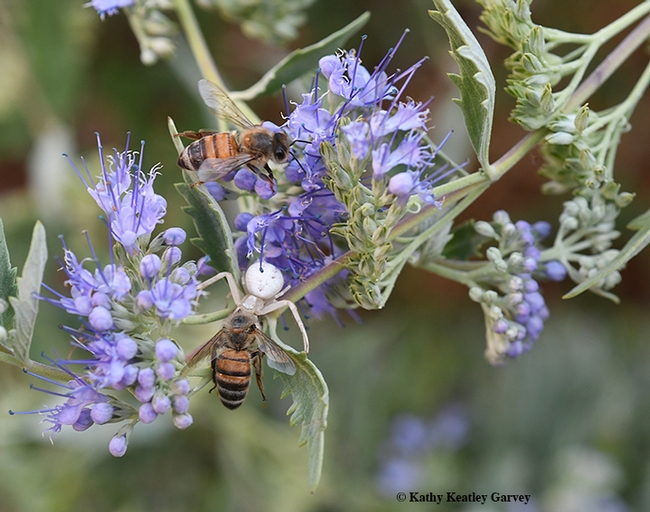
A crab spider nails a honey bee while another honey bee watches. This image, on bluebeard, Caryopteris x clandonensis, was taken in Vacaville, Calif. (Photo by Kathy Keatley Garvey)
Assassins in The Garden
A pollinator garden is a study in diversity--and of inclusion and exclusion. The residents, the immigrants, the fly-bys, the crawlers, the wigglers, the jumpers. The big, bad and bugly. The prey and the predators. The vegetarians and carnivores. The nectar-rich flowers attract honey bees,...
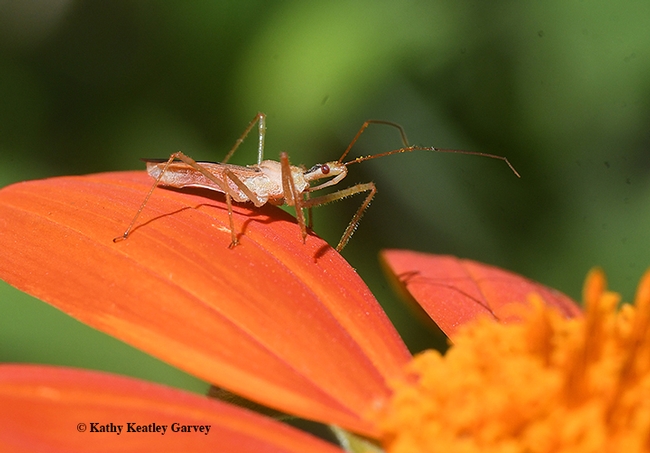
Lying in Wait--An assassin bug, Zelus renardii, lies in wait on a Mexican sunflower, Tithonia. (Photo by Kathy Keatley Garvey)
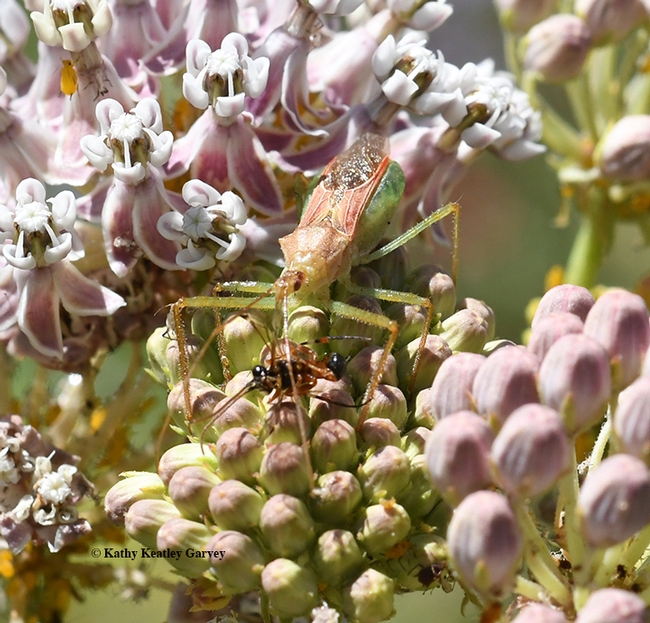
Gotcha! An assassin bug, Zelus renardii, sucking the juices from prey. (Photo by Kathy Keatley Garvey)
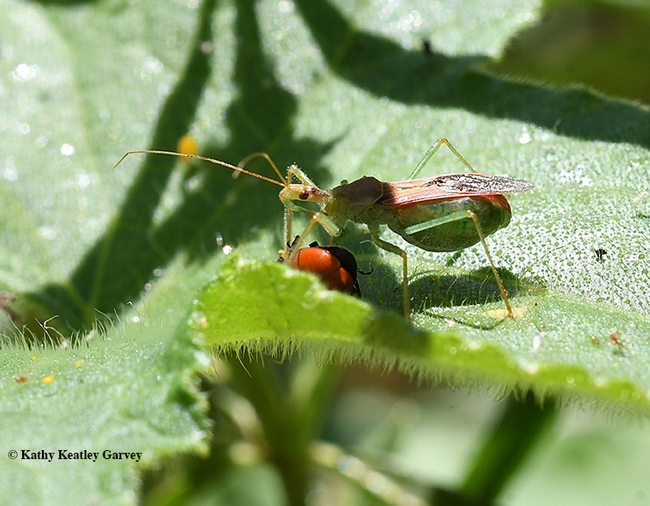
Caught in the act! An assassin bug, Zelus renardii, stabbing a lady beetle, aka lady bug. (Photo by Kathy Keatley Garvey)
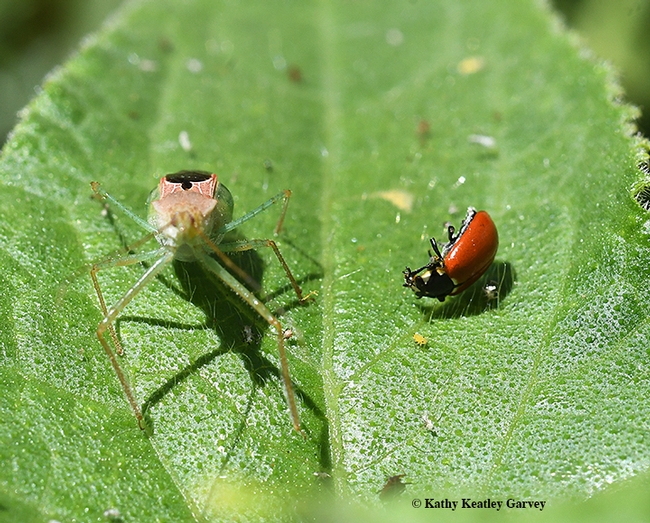
Who's next? The assassin bug, Zelus renardii, appears to be looking at the camera after killing a lady beetle, aka ladybug. (Photo by Kathy Keatley Garvey)
Western Tiger Swallowtails: Not All Are 'Picture Perfect'
It was "hit and miss." The predators hit, and they missed. Oh sure, they took a chunk out of these Western tiger swallowtails, but as they say, "a miss is as good as a mile." The predators? Could have been a hungry bird, praying mantis, or a spider. The Western tiger swallowtail, Papilio...
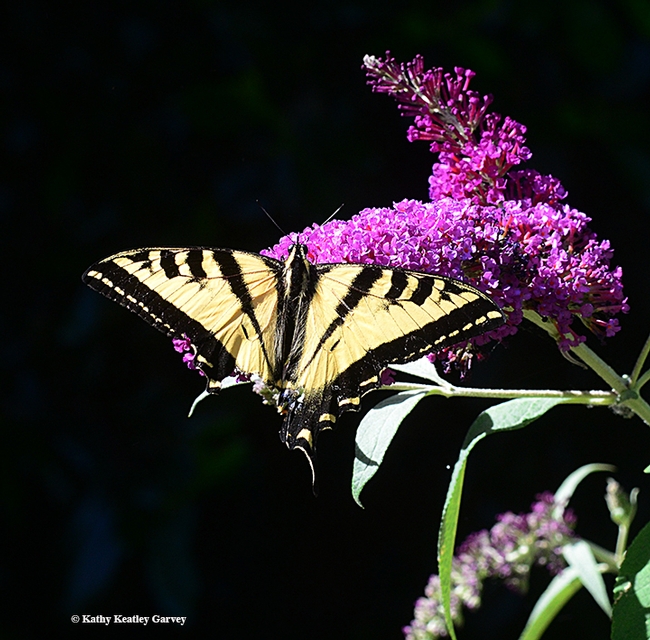
A Western tiger swallowtail nectaring on a butterfly bush. Note that it is missing part of its tail. (Photo by Kathy Keatley Garvey)
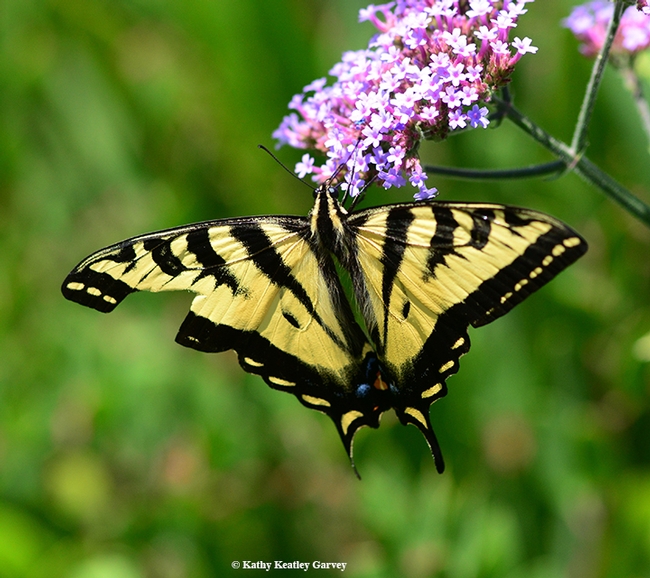
This Western tiger swallowtail, nectaring on verbena, is missing part of its forewing. (Photo by Kathy Keatley Garvey)
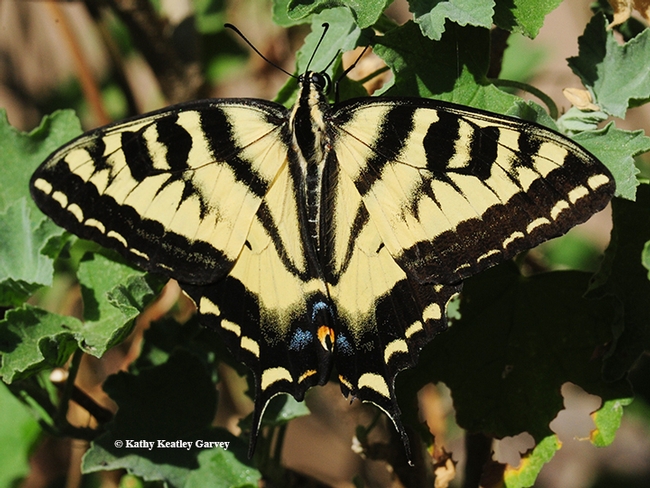
A newly eclosed Western tiger swallowtail, structures all intact. (Photo by Kathy Keatley Garvey)
